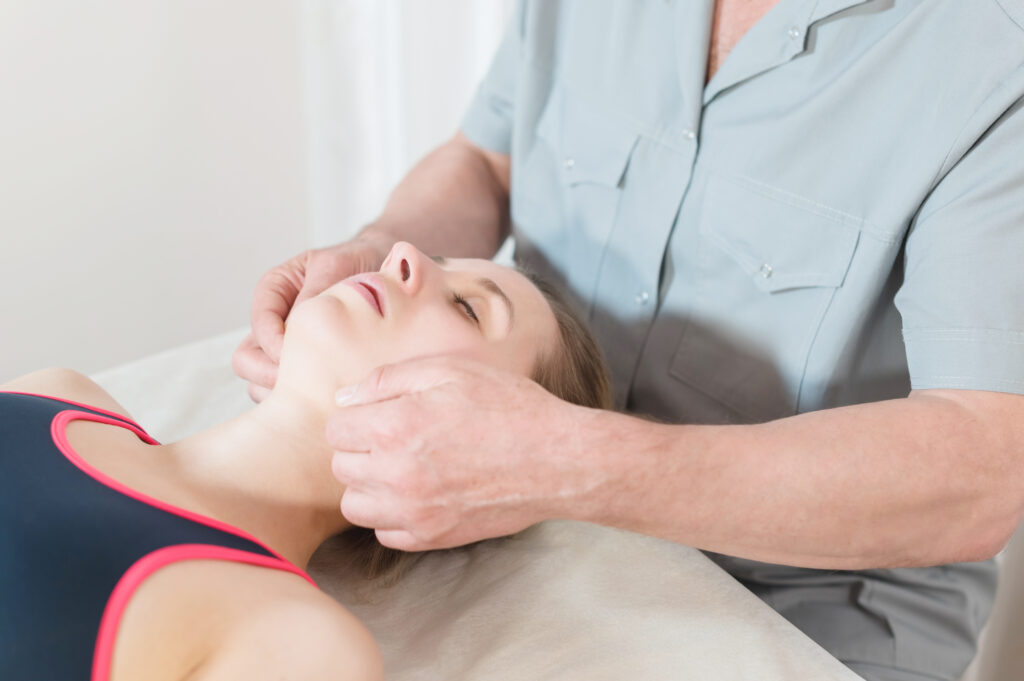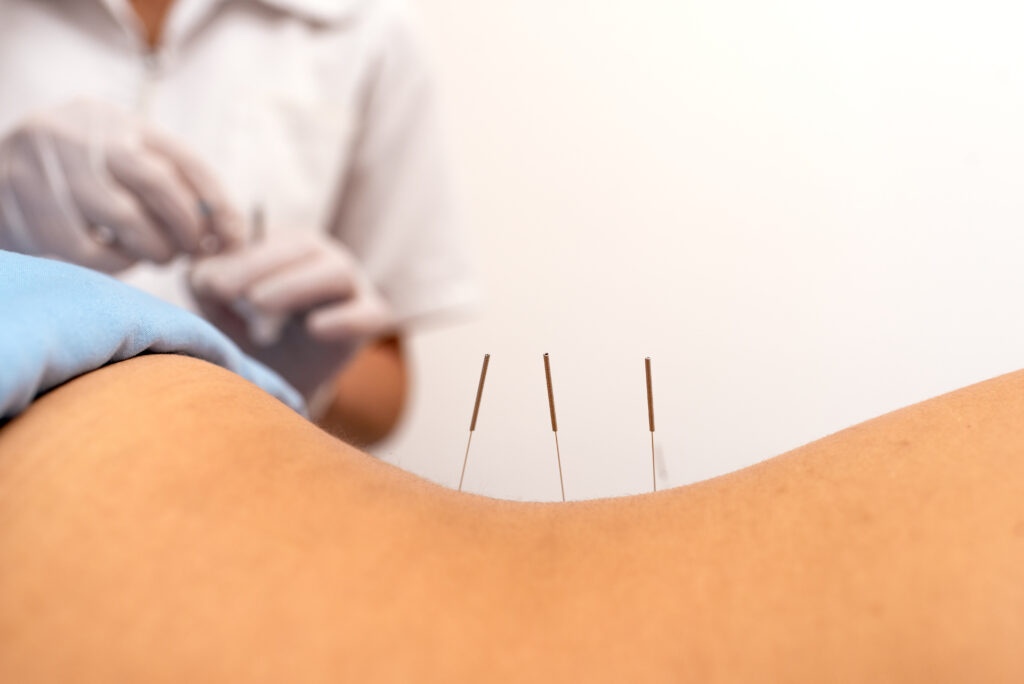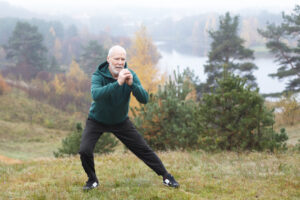
Temporomandibular Joint Disorders (TMJD – sometimes referred to as simply TMJ) are a common source of persistent discomfort and pain for many people and can have a profound impact on daily activities such as eating, talking, and even smiling.
Dry needling is a promising therapeutic technique for individuals looking for a non-invasive and effective solution.
What Is TMJ?
The temporomandibular joint, which connects the jaw to the skull, plays an important role in facilitating essential movements like chewing, talking, and facial expressions. When this joint experiences dysfunction, people may encounter symptoms such as persistent jaw pain, clicking or popping sounds, headaches, and difficulties in opening or closing the mouth.
These symptoms collectively define Temporomandibular Joint Disorders (TMD or TMJD) and are sometimes referred to in shorthand as simply TMJ. It’s important to note that TMJD isn’t a one-size-fits-all diagnosis. For some people, it may refer to swelling or tension within their jaw muscles, whereas for others, it may be due to a misalignment of their jaw bones and – for others still – could be a symptom of arthritis.
As demonstrated, the exact cause of TMJD varies from person to person and can often be complex and multi-faceted. For some people, the cause may be very obvious – such as trauma or injury, whereas for others, it may be a combination of issues.
Some common causes of TMJD include:
- Trauma or injury to the jaw
- Arthritis
- Frequent and repeated teeth grinding and/or clenching
- Misalignment of the teeth
- Long-term muscle tension due to emotional stress or anxiety
- Genetic factors
- Hormonal changes (particularly in women)
- Poor posture
- Structural issues within the joint itself

What is Dry Needling?
Dry needling is a minimally invasive therapeutic technique used by physical therapists to target and alleviate pain and muscle dysfunction. This technique involves the insertion of thin, solid needles into specific trigger points within muscles, tendons, or connective tissues, stimulating a healing response and promoting muscle function restoration.
Dry needling has a rich history that blends traditional Chinese medicine and Western medical practices. While acupuncture – a traditional Chinese medicine technique – laid the foundation for needling therapies, the evolution of dry needling in Western medicine can be traced back to the early 20th century. The technique initially involved injections to address myofascial trigger points, eventually transitioning to the use of solid needles without injecting substances—hence the term “dry needling.”
In recent years, dry needling has gained widespread acceptance, particularly within the field of physical therapy, where it is integrated into rehabilitation programs for various conditions.

Benefits of Dry Needling for TMJ Disorders
Muscle Relaxation and Pain Reduction
One of the primary benefits of dry needling for TMJ is its capacity to release tension in the muscles surrounding the jaw joint. By pinpointing trigger points, physical therapists can induce muscle relaxation, providing tangible relief from the pain and discomfort associated with TMJ disorders.
Improved Range of Motion
TMJ disorders often result in restricted jaw movement, impacting daily activities. Dry needling contributes to an improved range of motion by releasing tight muscles, thereby reducing the limitations individuals may experience.
Increased Blood Flow and Healing
The insertion of needles during dry needling promotes increased blood flow to targeted areas. This enhanced circulation facilitates the delivery of oxygen and nutrients to the affected tissues, expediting the natural healing process and aiding in the recovery of damaged or inflamed tissues.
Complementary to Traditional Therapies
Dry needling can be seamlessly integrated into traditional physical therapy approaches, creating a comprehensive and synergistic treatment plan for TMJ disorders. This combination allows for a holistic approach to address the condition’s symptoms and underlying causes.
Considerations for Dry Needling
While generally safe, there are considerations individuals should be aware of before opting for dry needling:
Sensitivity to Needles
Patients with needle sensitivity or fear should communicate this to their physical therapist, who can provide guidance and address concerns.
Potential for Temporary Soreness
Some individuals may experience temporary soreness or bruising at the needling site. This is a normal reaction and typically resolves within a few days.
Individual Responses Vary
The effectiveness of dry needling can vary from person to person. Open communication with the physical therapist is crucial to ensure personalized and effective treatment.
If you’re considering dry needling for TMJ treatment, the Dosher Physical Therapy team can help. A consultation with one of our highly trained physical therapists will help determine if this technique is the right fit for your individual needs and preferences. Contact us today.






